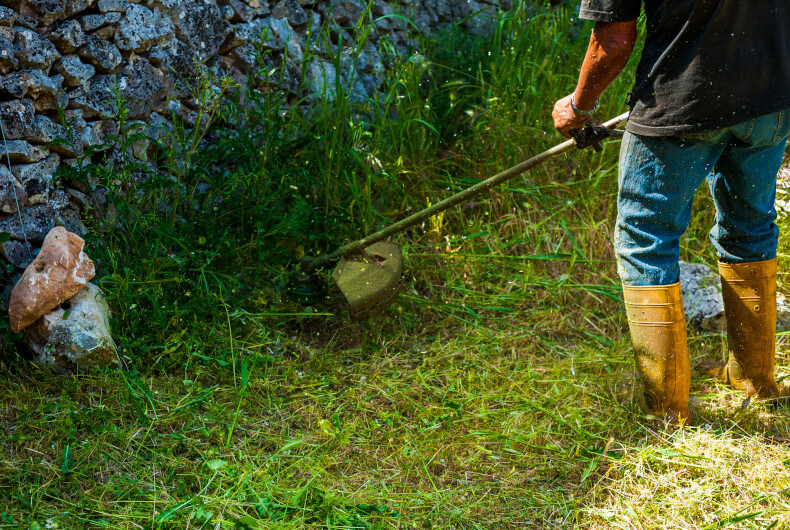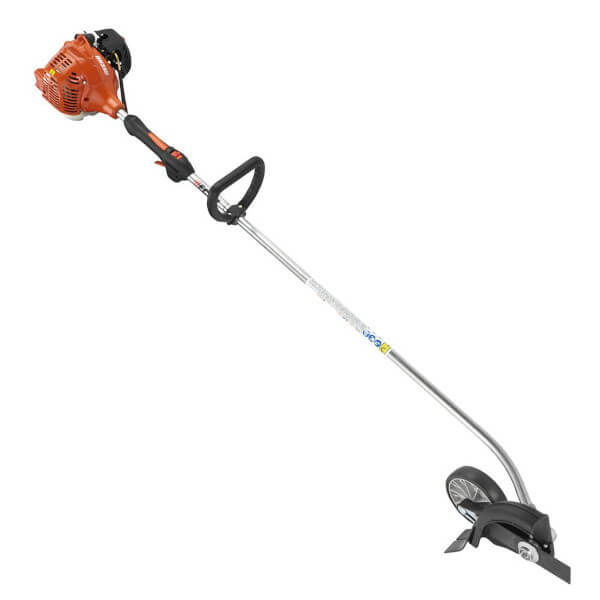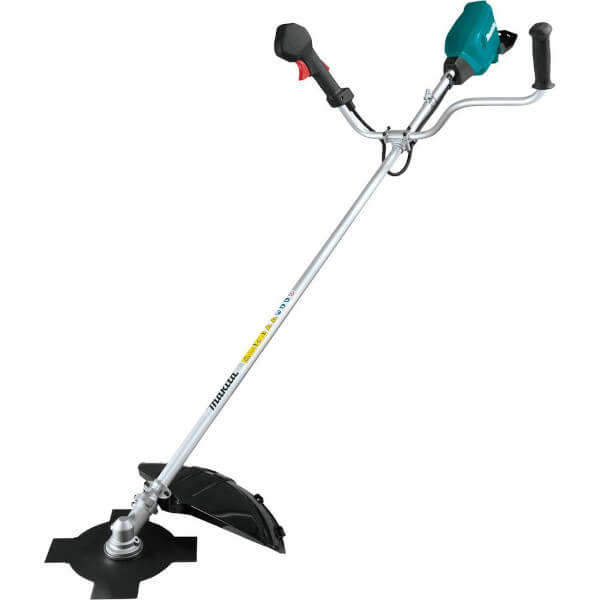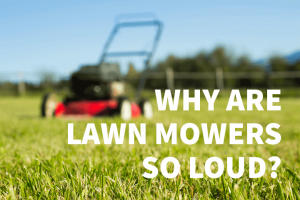 In a nutshell, Weed Wacker and Weed Eater are two different names for the same piece of equipment.
In a nutshell, Weed Wacker and Weed Eater are two different names for the same piece of equipment.
Many people use the words “weed eater” and “weed wacker” interchangeably to describe any small gasoline engine-powered gardening tool that uses a thin nylon line for cutting weeds, grass, or other plants. However, these devices are actually string trimmers or weed trimmers, and they come in many types.
String trimmers are used for edging and trimming, requiring maneuvering in tight and difficult-to-reach spaces, such as between chain link fences.
Table of Contents
Where Did the Terms Weed Eater and Weed Whacker Come From?
The term “weed eater” was coined in 1971 by George Ballas, a Texas inventor credited with the invention of the string trimmer. The term was used in advertising campaigns and became a household word. The Weed Eater brand itself has become a trademark. The term is often used to refer to other manufacturers’ string trimmers.
This term came about when Ballas was working on his trimmer. The story goes that he was at a car wash and became mesmerized by the cloth strips cleaning his vehicle. He had been struggling to find a way to mow the grass close to trees on his property and had a Eureka moment. At home, Ballas gathered an old tin can, punched some holes in hit and fed fishing line through the holes. He attached his invention to his edger and “voila!” the Weed Eater was born.
Unfortunately, no records detail why weed whackers were named such. Many believe it’s related to their ability to quickly chop or whack off weeds from the ground.
The terms “weed eater” and “weed whacker” have also been applied to larger gasoline-powered brush cutters because their wide cutting blades can cut through dense weeds and brush where a conventional lawnmower would get clogged or bogged down.
What Parts of The US Call Them
The term “weed wacker” is used in most areas of the United States and Canada. In many cases, people use the term interchangeably with “weed eater.”
It is common to hear various terms, including weed whacker and weed eater, throughout most areas of the United States, with few places where one term dominates all others. The only area that seems to be a clear exception is northern Midwest cities such as Minneapolis where weed whacker is preferred.
Californians are most likely to call string trimmers by their original name “weed eater.” The same goes for Illinois, Oregon, and Washington State.
Many people in Florida use the terms weed eater or weed whacker interchangeably.
Most Texans will say it’s a weed whacker; they do not offer other alternatives. Texans may be familiar with different names if they previously lived near these states; Washington State, Oregon, North Carolina. However, this doesn’t necessarily mean that residents of these areas will also agree with this terminology.
Weed Wackers is used in most parts of Wisconsin; however, residents in the southern part of the state prefer to call them Weed Eaters.
What Are Some Other Names for String Trimmers?
A string trimmer, also known as a weed eater or edger, is an outdoor tool used to cut the grass around the edges of walkways, driveways, and lawns.
String trimmers are usually powered by gasoline engines attached to a long metal shaft equipped with a handle at one end and interchangeable heads for specific purposes at the other.
Other names for string trimmers include weed whackers, weed eaters, electric weed eaters, edgers, and weed wacker; a slight variation on the term and a phrase frequently used by manufacturers in advertising.
Some people refer to them simply as “trimmers.” However, regardless of what you call it, this valuable tool can make caring for your lawn much easier.
What Is the Difference Between a Weed Eater and An Edger?

- The weed eater is explicitly designed to cut grass, weeds, and other similar herbaceous plants. In contrast, the edger is more adept at cutting defined lines like sidewalks, driveways, and street curbs.
- Weed eaters are lighter weight with larger blades that spin relatively fast while an edger’s blade spins slower as the same equipment on a weed eater does. Combination weed eaters/ edgers also have a head mechanism that can pivot 90 degrees. While the head is parallel to the ground, it can function as a weed eater. Rotating the head perpendicular to the ground will allow it to be used as an edger.
- The weed eater is designed to be a more all-purpose tool that can handle many grass varieties, whether long or short. It has a string that spins at high speed, and the blades cut up to ten times faster than an edger blade.
- An edger comes with a guide wheel that helps the operator make straight and curved clean lines for sidewalks, garden beds, street curbs, driveway entrances, and exits. The equipment is typically less noisy than the weed eater, making it perfect for trimming near homes where quiet operation is paramount.
- The weed eater is much lighter, faster, and more mobile than the edger, typically with a maximum cutting length of 11 inches. Weed eaters are also designed to be adjustable for various amounts of grass growth. At the same time, many edgers can only cut up to one to two inches.
- While both tools are excellent for landscaping, an edger is best used on lawns where speed and quiet operation counts, like golf courses or sports fields. It allows the operator to trim around obstacles like sand traps or sprinkler heads that might break if hit with a weed eater blade or string head.
- Weed eaters have throttle control, which allows them to operate at either higher or lower speeds depending on the job. However, edgers can typically only be used at one speed.
- Weed eaters have one or two string blades, while most edgers have a stiff metal or plastic blade.
- The edger has an adjustable guide wheel that allows the operator to maintain perfect positioning during operation. At the same time, the weed eater can wander off course depending on how the user moves it through tall grass and weeds.
What Is the Difference Between a Weed Eater and A Brush Cutter?

A brush cutter is an engineering tool used to clear woody vegetation land, typically small limbs and brush less than 1″ in diameter. It uses a circular saw configuration to cut through dense vegetation relentlessly, including small trees, shrubs, vines, and reed grass.
Brush Cutters are gas-powered with engines ranging from 2-5HP with maximum cutting speeds of up to 200 feet per minute (fpm). These large blades spin quickly, allowing them to make quick work of even the densest vegetation.
The powerful engine is coupled with a robust drive train that can use either belts or gears to transfer power from the engine down to the spinning blade. The drive system can have from six to nine different gears.
The brush cutter is very controllable in the lower gears, so you can use it for more delicate jobs, such as trimming and sculpting.
However, a lower gear constant speed also means a reduced top speed, making cutting extensive vegetation more time-consuming.
A weed eater is a tool that uses a mono-filament line or nylon cords to cut grass or weeds around buildings and landscape features.
There are several trimmer types, including handheld string trimmers, pole saws, sidewalk cutters, and hedge trimmers. Some varieties combine multiple functions into one machine, such as blowers, edgers, trimmers, etc.
The following are differences between a weed eater and a brush cutter:
- Weed eaters are made for cutting grass, not brush! You can use brush cutters on your lawn as well. Just keep away from plants you don’t want to kill, such as flowers, bushes, etc.
- A weed eater has a bump feed option to feed more string. A brush cutter’s blade will need to be removed when it gets dull or when you want to use a different blade style.
- Brush cutters can be dangerous if not used properly. While a string trimmer can injure you if it bumps against your leg, a brush cutter could saw through your bone!
- Weed eaters are lighter and easier to carry, while brush cutters are heavier due to the higher HP engines.
- Brush cutters are mainly used for cutting down trees or heavy bushes that a weed eater can’t do.
Can You Edge with A String Trimmer?
As long as the edge is free of rocks and other types of debris, you can use a string trimmer to edge it. This will allow for a clean line when trying to keep your lawn neat and trimmed.
However, it’s important to note that getting a consistent cut with the string trimmer might be challenging. The lack of a guide wheel on string trimmers will allow it to sway and make cuts into the grass. If you find this happens a lot, change your orientation so that the movement of the trimmer will be towards the driveway or sidewalk instead of your grass.
If you have a weed eater and want to use it as an edger, see if replacement edging blades are available for your model. It will make the job much easier, although it will be time-consuming to swap them out.
Summing Up
Weed Wacker and Weed Eater are terms that describe the same thing- a tool to cut weeds and grasses. They can also be called string trimmers. This is because they were initially made by a company named “Weed Eater.”
However, because other companies make products with similar functions under different names, they have become colloquial names for these objects within their respective communities.
Therefore, there’s not much difference between them except what people call them in their origin. And thus, it should be considered one term in most cases.



